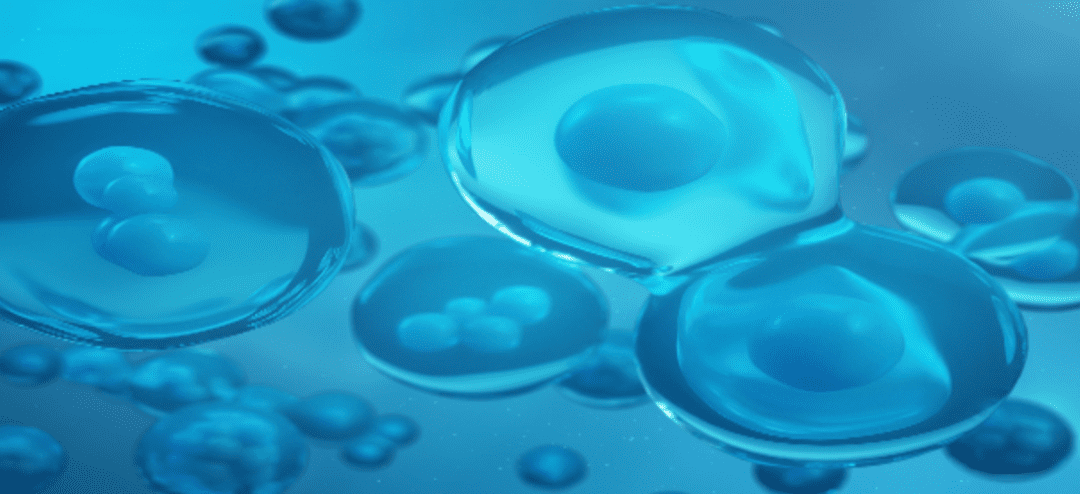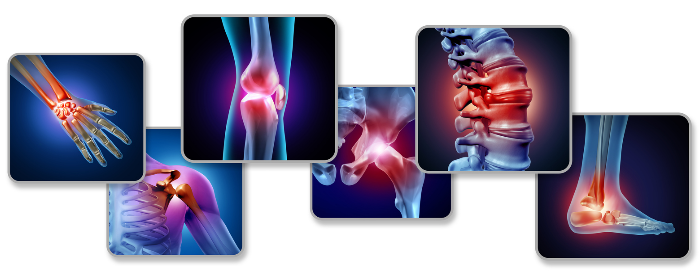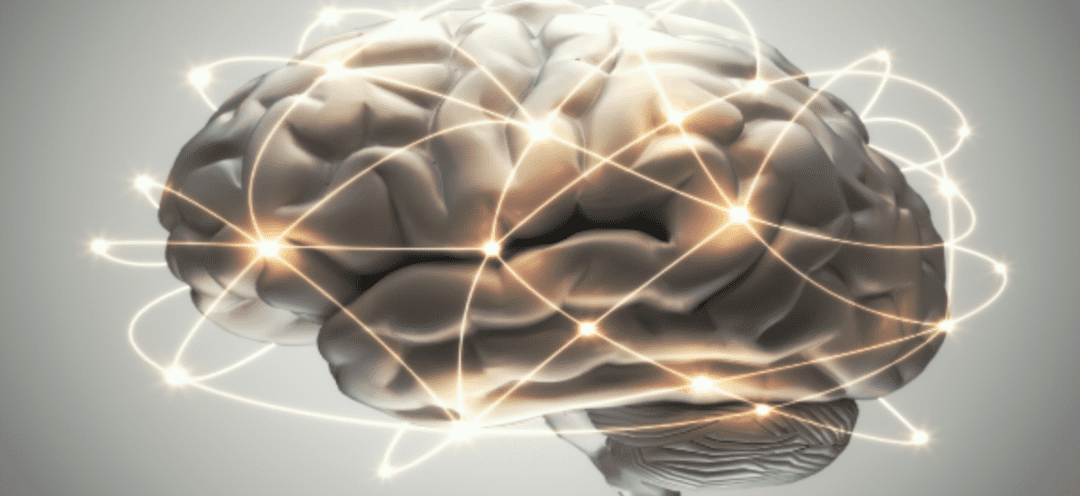
by Stemedix | May 10, 2021 | ALS, Stem Cell Therapy
Amyotrophic lateral sclerosis (ALS), also known as Lou Gehrig’s disease, is a rare disease in which the body’s neurons that control voluntary muscles begin to degenerate. Patients experience muscle weakening and involuntary spasticity, as well as symptoms such as muscle cramps and stiffness, and eventually, difficulty moving, speaking, swallowing, and breathing.
While there is currently no cure for the devastating illness, there are drugs that can increase the quality of life and marginally slow the disease’s progression. Researchers have long been pursuing a more effective treatment for the disease, and efforts were increased significantly as a result of the 2014 viral Ice Bucket Challenge, which raised at least $115 million for research efforts.
Stem Cell Therapy for ALS
One area that’s of particular interest to researchers is regenerative medicine therapy. Also known as stem cell therapy, this option could be a potential treatment for ALS, as it could help sustain and nurture motor neurons that have been compromised by the disease. This is due to stem cells’ ability to release neurotrophic factors, which support and protect nerve cells. This is not a cure, nor a guarantee, but is an option to help slow down the progression of the condition.
Stem cells can be harvested from sources such as the umbilical cord (Wharton’s Jelly), or the patient’s own adipose (fat) tissue, then strategically transplanted at locations such as the spinal canal, intravenous, or muscle tissue. Once in the brain tissues, stem cells have the potential to protect healthy neurons and replace those that have been compromised.
Experts are using stem cells both for research purposes, by creating cells genetically identical to patients to see how they’ll respond to treatments, as well as for treating patients directly. With their protective qualities, the cells can help preserve healthy cells and repair or replace those that have been damaged.
According to results from clinical trials, 87% of patients who received the treatment responded to the treatment with at least 25% improvement and slowed disease progression. Evidence also suggests the treatment is safe and well-tolerated.
While much of how ALS develops remains a mystery, researchers are hopeful that further investigation into stem cell therapy will help to drastically improve treatment outcomes compared to the drugs currently available. If you would like to learn more contact a care coordinator today!

by admin | May 7, 2021 | Stem Cell Therapy, Mesenchymal Stem Cells, Musculoskeletal
Research exploring the benefits of mesenchymal stem cells (MSCs) has demonstrated tremendous potential as a regenerative therapy option for the musculoskeletal system. Research into these cell-based regenerative therapies is promising, and they must continue to provide the data necessary to show their therapeutic potential in clinical settings.
In this review, Steinert et al. review and summarize some of the promising and unique therapeutic features of adult MSCs, detail their current state of clinical application as a regenerative musculoskeletal therapy, and describe the potential for future developments in this field.
Specifically, as a part of this review, the authors share the status of 31 clinical cell therapies for musculoskeletal regeneration occurring between 1996 through 2011 and specifically covering bone defects and nonunions, avascular necrosis of the hip, cysts and benign tumors of the bone, cartilage lesions, and tendons and ligaments; results for the majority demonstrate the safety of and/or the efficacy associated with the specific method of cell-delivery being evaluated.
The field of regenerative orthopedics points to the large body of MSC clinical research indicating the successful treatment of myocardial infarction, post-stroke or spinal cord injury nerve regeneration, graft versus host disease, and a variety of other conditions as an indication that the application has tremendous potential as a regenerative therapeutic option in a wide variety of musculoskeletal indications.
Although there appears to be evidence demonstrating the paracrine and trophic functions of MSCs, research explaining the specifically demonstrated therapeutic effects is still being determined. The authors highlight that research continues to explore the reasonable therapeutic expectations associated with MSC-based treatments, an essential step required to fully understand the range of healing associated with musculoskeletal regenerative cell-based therapy.
The authors, in concluding this review, point out that the demand for MSC-based musculoskeletal regenerative therapies continues to increase. Steinert et al. call for further study into the specific combination of cell preparation, bioactive factors, and stimuli for each specific MSC therapeutic application. Once these have been demonstrated for each application and should they demonstrate better or improved outcomes compared to standard treatments, only then can they be considered for long-term clinical application.
Source: (n.d.). Concise review: the clinical application of mesenchymal stem cells …. Retrieved from https://pubmed.ncbi.nlm.nih.gov/23197783/

by Stemedix | May 3, 2021 | Neurodegenerative Diseases, Stem Cell Therapy, Traumatic Brain Injury
In neurodegenerative conditions and cases of brain damage such as traumatic brain injury (TBI), the goal of treatment is usually to manage symptoms and prevent or slow the rate of further damage. Yet, ongoing research suggests stem cells could play an important role in creating new neurons, potentially resulting in repair of central nervous system damage and potentially regrow brain tissue. While the science is still in its infancy, there is evidence to suggest stem cell therapy could help to potentially restore lost brain function.
Just until a couple decades ago, scientists were under the impression that the brain and spinal cord could not rebuild themselves once cells were lost. Yet, in the mid-1990s, neuroscientists discovered that the brain could create new neurons in certain circumstances, which arise from neural stem cells. As undifferentiated cells, the stem cells could give rise to many different brain cell types, including neurons, which carry messages throughout the nervous system.
Further research has supported the idea that neurons can regenerate. For instance, in 2003, research was published which showed improvements in paralyzed rats who were exposed to a virus which caused symptoms similar to that of amyotrophic lateral sclerosis (ALS). Mice that had been previously paralyzed were able to regain some mobility after receiving stem cell injections, and the stem cells took on the characteristics of mature motor neurons.
Researchers have also been exploring stem cell therapies to help treat Parkinson’s disease. The goal is to rebuild the central nervous system through stem cell implantation. While levodopa is the go-to treatment to help regulate dopamine levels which are affected in PD, the drug’s efficacy tends to wear off over time, and its side effects increase. Some researchers have investigated the use of fetal stem cell tissue for PD patients, but lack of standardization and challenges in acquiring donor tissue have been barriers to ongoing research efforts.
With that said, stem cells from umbilical cord blood and adult adipose (fat) or bone marrow can also be coaxed to display many protein markers similar to those found in nervous system cells. It’s unclear whether these cells will ultimately be able to give rise to functioning neurons, but researchers continue to make progress.
Ultimately, there is much left to discover when it comes to the potential role of being able to regrow brain tissue and regenerative therapies such as stem cells in neurodegenerative conditions and brain injury. What we’ve already seen is promising, however. As experts continue to develop a deeper understanding of how stem cells and neurons can work together, patients with these challenging conditions will likely continue to benefit from evolving treatment options. If you would like to learn more then contact a care coordinator today!

by admin | Apr 30, 2021 | Neurodegenerative Diseases, Stem Cell Research, Stem Cell Therapy
Neurodegenerative disease is a broad term encompassing a number of chronic, progressive diseases that result in degeneration and or death of neurons; these diseases include Parkinson’s disease (PD), Alzheimer’s disease (AD), and amyotrophic lateral sclerosis (ALS) and affect over 50 million Americans each year[1][2].
Since neurons possess a very limited ability to reproduce and/or replace themselves, any damage to these cells tends to be permanent and contributes to incurable and progressive debilitating conditions affecting physical movement and mental function.
While research has determined that these neurodegenerative diseases are primarily a result of the accumulation of misfolded proteins in the brain, the specific cause of these conditions remains unknown; additionally, the complexity of these conditions often lead to delayed diagnosis, most often a result of the lack of effective and recognizable biomarkers. To date, no preventative treatment for these conditions exist and any current treatment serves to only delay the progression of the disease, most often with poor results.
In this article, Yao et al. explore the viability of using mesenchymal stem cells (MSCs) as cell replacement therapy for treating neurodegenerative diseases. According to the authors, MSCs demonstrated the ability to self-renew and differentiate coupled with their relative ease of collection, isolation, and ability to culture and their immunoregulatory properties make them a promising potential treatment option.
Although the specific therapeutic mechanisms of MSCs in the treatment of neurodegenerative diseases are still being studied, they have shown potential in three specific areas: homing, paracrine, and immunoregulation.
Homing involves MSCs ability to spontaneously migrate to damaged regions of the body, making them a viable therapeutic treatment option – especially as a carrier of therapeutic drugs. It is hypothesized that MCS’s ability to home should allow drugs to be attached and to pass through the blood-brain barrier to be delivered to locations in the CNS and brain that are affected by neurodegenerative diseases.
Paracrine, or paracrine signaling, is a cell’s ability to release hormones that communicate with the cells in its vicinity. MSCs ability to secrete growth factors, cytokines, chemokines, and various enzymes are important aspects of cell migration and immune regulation. Animal studies have demonstrated using MSC-derived exosomes to improve symptoms associated with muscle atrophy translates into a promising clinical treatment strategy for neurodegenerative diseases.
MSCs are undifferentiated precursor stem cells with low immunogenicity. Researchers attribute the immunoregulation of MSCs to their various interactions with T cells, B cells, and natural killer cells. Animal studies have shown that placental-derived MSCs have demonstrated beneficial effects, particularly in mice with AD; researchers hypothesize that this effect is a result of these MSCs inhibiting the release of inflammatory cytokines, preventing cognitive impairments, and increasing the survival rate of neurons and nerve regeneration. These findings have demonstrated the potential for immunosuppressants, in combination with MSCS, to be used in future clinical treatments of neurodegenerative diseases.
After reviewing numerous in vitro and in vivo experiments in animal models, the researchers have confirmed the potential therapeutic benefits of MSCs as well as their safety and effectiveness in a wide variety of therapeutic applications. Additionally, studies have also demonstrated no serious or concerning adverse reactions associated with clinical trials (both human and animal) using MSCs from autologous or allogeneic sources.
However, Yao et al. caution that as therapies using MSCs continue to develop, so too should the process used for preparing MSCs as well as that used for determining ideal method and dose for patients; taking these steps will contribute to a deeper understanding of MSCs potential when used as a therapeutic treatment for neurodegenerative diseases.
Source: (2020, July 20). Mesenchymal Stem Cells: A Potential … – Karger Publishers. Retrieved from https://www.karger.com/Article/Fulltext/509268
[1] “What? | JPND.” https://www.neurodegenerationresearch.eu/what/.
[2] “Neurodegenerative Diseases: An Overview of … – NCBI – NIH.” https://www.ncbi.nlm.nih.gov/pmc/articles/PMC1280411/.

by Stemedix | Apr 26, 2021 | Degenerative Disc Disease, Stem Cell Therapy
Lower back pain is a common issue many adults face. While it may resolve itself over time, you’ll still want to pursue ways to relieve discomfort in the meantime. Of course, any persistent pain should be addressed by a doctor, but here are some home remedies for lower back pain relief you can try first.
Get Moving
It may seem counterintuitive, but the right type of exercise could actually alleviate your back pain. Physical activity can increase blood flow to the lower back, which can help to loosen the muscles and accelerate healing. Moves that can strengthen the core and back, such as bridges, knee-to-chest stretches, and supermans may bring relief over time. Additionally, stick to low-impact cardio, such as swimming.
Use Hot/Cold Therapy
If you’re experiencing an acute back injury that’s lasted four weeks or less, use cold therapy such as a cool compress. Bringing your body temperature down can help reduce swelling and inflammation, and bring numbing relief. If you have chronic back pain, however, it’s a good idea to apply constant, low-level heat, such as a heated blanket or warming adhesive wrap.
Stretch Regularly
Stretching moves can help reduce tension in the lower back and support mobility. Consider trying a yoga routine for your back. Moves like cat/cow, child’s pose, sphinx, and spinal twists can relax the back, mobilize the spine, and gently strengthen your muscles.
Assess Your Footwear
If you spend a lot of time on your feet, unsupportive shoes could be playing a role in your back pain. Look for a pair with cushioning and ample arch support, and avoid any heels. These distribute your weight improperly and could contribute to back pain. And, make sure you’re wearing the right size: shoes that are too snug will change your gait, putting excess strain on your back.
Find Ways to Beat Stress
Stress reduction is important for overall health, but especially for a healthy back. If your body is holding tension, it will likely manifest in the back and neck. Try to find healthy ways to minimize your stress. Deep breathing exercises, journaling, and spending time with loved ones to unwind can help.
Improve Your Sleep
Getting ample sleep gives your body the opportunity to repair itself. Unfortunately, poor sleep posture can actually make existing back problems worse. Aim to maintain a neutral pose as you sleep, and try to stay on your back. Placing a small pillow beneath your knees can help maintain the natural curve in your lower back. If you prefer sleeping on your side, keep a pillow between your knees to reduce tension on your joints. Different types of back pain may respond to different therapies, so be sure to explore various home remedies. For any back pain that doesn’t fade after a few weeks, be sure to visit a healthcare professional. If you are experiencing chronic back pain, such as Degenerative Disc Disease or Spinal Stenosis, perhaps you may be a candidate for stem cell therapy to help with pain management and/or regeneration of damaged tissues. If you would like to learn more contact a care coordinator today!

by admin | Apr 23, 2021 | Glaucoma, Stem Cell Research, Stem Cell Therapy
Glaucoma is a group of eye conditions that damage the optic nerve and lead to progressive, irreversible loss of vision. With over 80 million people affected by the condition, glaucoma is the second-leading cause of blindness, behind only age-related macular degeneration.
Although there are several different risk factors, the most understood and treatable risk factor for glaucoma involves controlling the eye’s intraocular pressure, or IOP. When left unaddressed, glaucoma progressively leads to vision loss resulting from damage to axons and associated retinal ganglion cells (RGCs) responsible for transmitting visual information from the eye to the brain. While current treatments for glaucoma are primarily pharmacologic, laser-based, and surgical procedures designed to lower and/or control IOP, they are unable to reverse or restore vision lost as a result of previous damage to the affected axons, RGCs, and the collective optic nerve.
Chanling, Slush, and Zack’s article aim to assess current literature and developments exploring the potential of using human stem cells to further study, and potentially treat, glaucoma and other conditions affecting the optic nerve. For the purposes of this review, the authors divide their discussion into four key areas: stem cell-derived trabecular meshwork cells to control IOP; stem cells as a source of RGCs; stem cell-derived RGCs for transplantation and vision restoration; and stem cells as a source for neurotrophic factors.
Stem Cell-Derived Trabecular Meshwork Cells to Control IOP
Insufficient drainage of the eye’s aqueous humor results in increasing IOP. Current medication for the treatment of this condition reduces aqueous production and or increases aqueous outflow through the trabecular meshwork (TM). Since the TM is a known source of stem cells, researchers hypothesize that these cells and specifically mesenchymal stem cells (MSCs) could be used to repair IOP function and potentially restore vision lost as a result of this condition.
Recent studies have shown promising results, leading researchers to believe that there is a strong possibility of using stem cell-derived TM cells to preserve optic nerve function and reduce IOP.
Stem cells as a Source of RCGs
In addition to assisting with regulating IOP, researchers believe that stem cells may also be able to preserve, and even restore, RCG function – which is ultimately responsible for vision loss caused by glaucoma.
Specifically, the authors point to a number of animal studies that have demonstrated positive responses in a number of signaling pathways and neuroprotective compounds responsible for promoting RNC function and survival. The authors also point out that, while these studies are promising, none have made it to the clinic.
Stem Cell-Derived RGCs for Transplantation and Vision Restoration
While still a relatively new concept, there has been tremendous progress made in the ability to transplant RCEs and photoreceptor cells in the eye. Coupled with the observed differentiation of RGCs, researchers believe the ability to successfully transplant RGCs, with the intent of restoring glaucoma-related vision loss, is not far off.
The authors note that, while these findings are promising, there is still much work and additional research to be completed in this area and that the process of transplanting RCGs is much more complicated than the process used for transplanting retinal pigment epithelial cells (RPEs) and photoreceptors cells.
Stem Cells as a Source for Neurotrophic Factors (NTFs)
Research suggests that deprivation of the NTF required for maintenance and survival of neurons is a leading factor in the progression of glaucoma. As a result, additional research has reported that supplementing additional BDNF and other NTFs, through the use of stem cells appears to support the health and survival of RGC. The authors point out that, while promising, the process required during this procedure is challenging, primarily because it requires the blood-retinal barrier to be circumvented.
The authors of this review conclude that, as a result of the rapidly advancing pace of ocular stem cell research and related ongoing advancements in stem cell technology, there are ongoing opportunities to better understand and improve upon the current glaucoma-related biology and to develop pharmacological models that include cell-based therapies in the effort to restore vision to those affected by glaucoma.
Source: (n.d.). The Potential of Human Stem Cells for the Study and … – IOVS from https://iovs.arvojournals.org/article.aspx?articleid=2518375







 St. Petersburg, Florida
St. Petersburg, Florida
